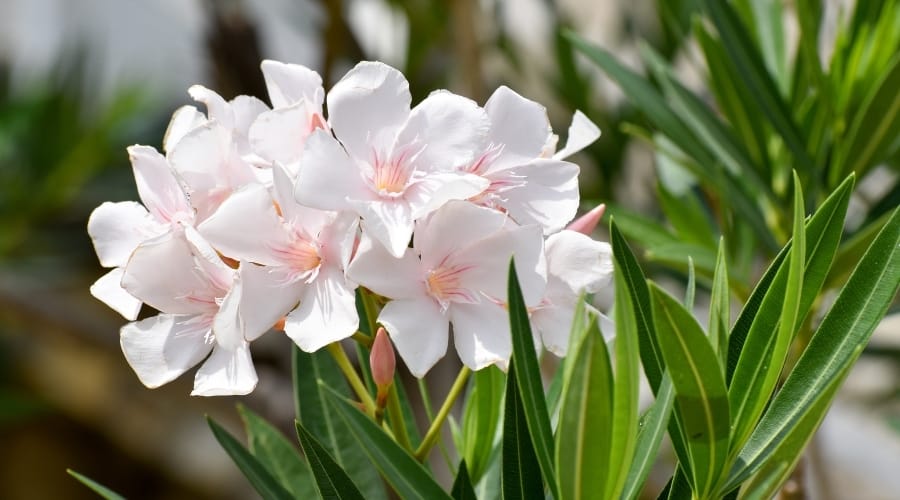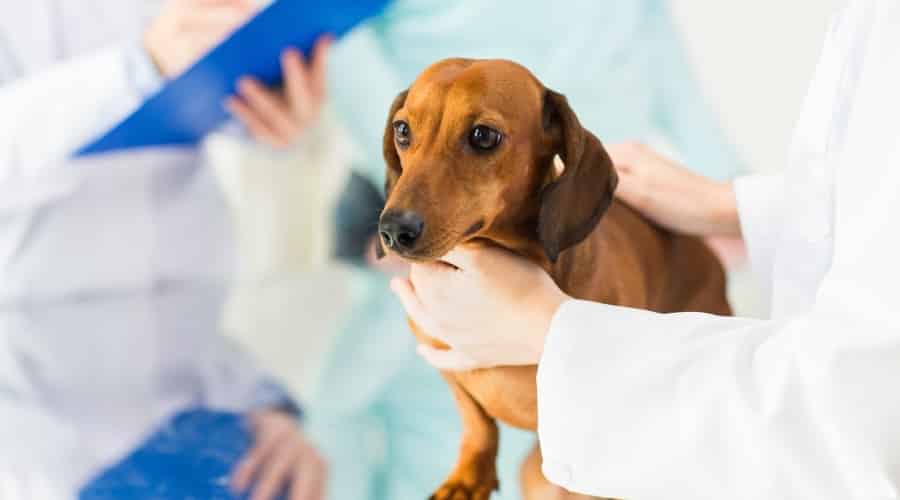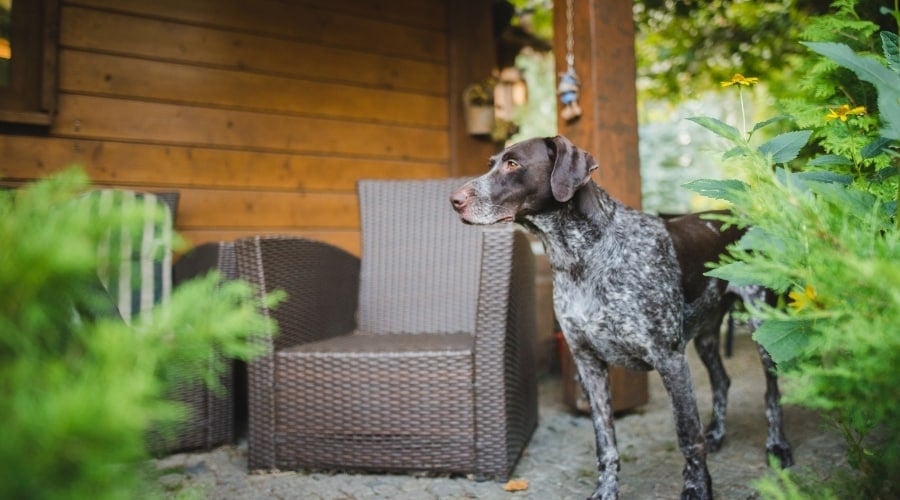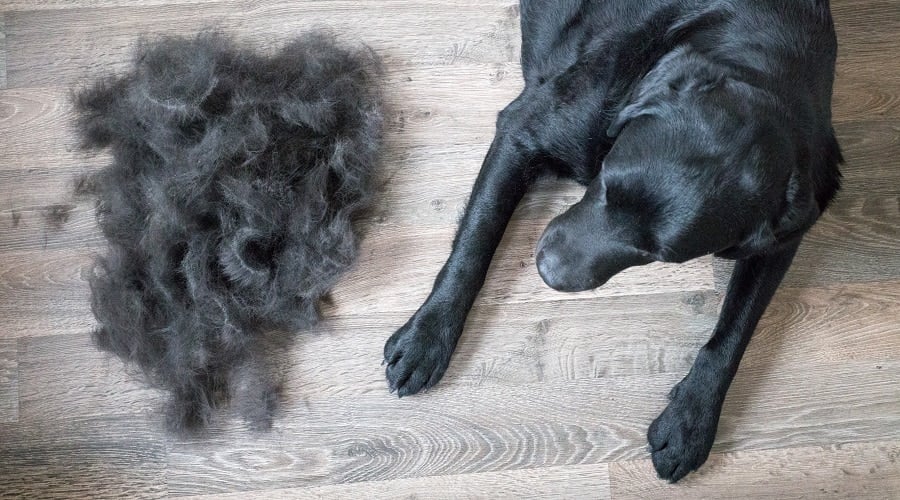My Dog Just Ate an Oleander Bush! Are Oleanders Toxic To Dogs?
When you purchase through links on our site, we may earn a commission. Here’s how it works.
Some dog owners aren’t aware that certain plants can, in fact, be dangerous to dogs. Plants like hydrangeas and even poinsettias (although mild) can cause problems if dogs decide to eat them while out on a leisurely stroll. Dogs explore their worlds with their mouth, so it’s quite common for this to happen.
Table of Contents
Although dogs are primarily carnivores, they are also scavengers by nature and will try to eat most things. Some dogs just enjoy the sensation of chewing, particularly puppies. This is why it’s always good to do a quick audit of any plants you may have in your garden if you plan to welcome a new canine companion into your household.
So, what happens if your dog has chewed or even eaten an oleander plant? All parts of the oleander plant are, in fact, toxic to dogs. If your pup did indeed eat oleander, you’ll need to contact your veterinarian right away. Let’s look at what you can expect and your next steps.
What Is An Oleander Plant?

Nerium oleander (commonly known as Nerium or oleander) is a type of evergreen shrub often used in gardens because it is hardy and low maintenance. It also blossoms with large, colorful flowers, particularly in the summer months. Oleander is a versatile plant and can be used as a hedge, a screening plant, or to add color and interest to your borders. It is widespread and grows in many US states.
Is Oleander Toxic For Dogs?

Yes, oleander is toxic to dogs, but also to other animals and people. All parts of the plant are toxic, including the leaves, stems, and flowers. However, because the taste of the plant is so bitter, this is usually off-putting enough to stop much of it from being consumed, in my experience.
The plant contains cardiac glycosides, and the main one is called oleandrin. These compounds disrupt the electrolytes in the body leading to an increase in potassium. This causes potentially life-threatening arrhythmias of the heart (irregular heartbeats).
Glycosides also cause bradycardia (a decrease in heart rate), which can, in turn, cause a drop in blood pressure. These toxins are very similar to digitalis or digoxin, which is a heart medication used in humans and animals. This drug is used very carefully to avoid toxicity and utilize its beneficial effects in medicine.
The plant can also be an irritant to the skin, with the sap of the plant possibly causing skin rashes, itchiness, and also blurred vision. You should take care when pruning the plant by wearing gloves.
Other plants that also contain toxic cardiac glycosides include:
- Foxglove
- Dogbane
- Lily of the Valley
- Milkweed
- Star of Bethlehem
- Kalanchoe
If your pup eats any of these plants, then treatment must be sought promptly, just the same as for oleander.
My Dog Ate Oleander. What Should I Do?

The dogs that I see and treat promptly for toxicities do far better than those where treatment has been delayed.
As with most cases of dogs eating foreign objects or plants that aren’t good for them, there are specific steps you should take immediately to get help for your pup. By following the steps below, you put your dog in the best position to mitigate potential problems from oleander ingestion.
Step 1: Stop Fido From Ingesting More
Remove your dog from the area and stop him from consuming any more of the plant. Place them in a secure location where they no longer have access to the plant. Make sure there are no additional remnants laying around, and survey how much was eaten.
Step 2: Evaluate Your Dog
Is your pup’s behavior still bright and lively? Has there been any vomiting or diarrhea? Do you notice them drooling excessively or pacing around and showing signs of poor health? Make note of anything that looks off, and be ready to describe any potential changes in their behavior to your veterinarian.
Step 3: Evaluate How Much Was Consumed
Does it look like he’s nibbled a leaf, or has he consumed lots? Was it a bunch of flowers that were eaten or an entire plant? Could he have eaten any other non-toxic plants like dandelions or petunias while he was in the garden too? Make a note of how much was eaten and if anything else was eaten at the same time.
Step 4: Call Your Veterinarian
Call them immediately to let them know what has happened. If oleander was consumed, it’s highly likely your veterinarian will want to see your dog right away due to the toxic nature of this particular plant.
Step 5: Follow Your Veterinarian’s Advice
If they want to examine your canine companion, make sure you bring them to the clinic as soon as possible. The sooner your pup can be seen, the better chance they have to recover. Dogs with suspected toxicity should never be ignored. The cases that I examine do best with prompt treatment.
What Happens When A Dog Eats Oleander?

Symptoms can start within 30 minutes or so of the plant being eaten and can be quite dramatic depending on the quantity consumed. If you know for sure that your dog has eaten oleander, then you should contact your veterinarian straight away. Even if he seems OK, don’t hesitate or wait for symptoms to develop, as it can quickly turn into a life-threatening situation. In my experience, delaying treatment to ‘wait and see what happens’ can put your pet at unnecessary risk.
The following is a list of common signs seen in oleander poisoning cases:
- Drooling and Nausea
- Vomiting
- Diarrhea
- Weakness
- Tremoring and Wobbliness
- Abnormal Heart Rate
- Cardiac Arrhythmia (irregular heartbeats)
- Pupil dilation
- Collapse
- Death
What Will My Veterinarian Do?

If your pet has eaten any part of the plant, you must call your veterinarian straight away as this is an emergency. Even if you think he’s only eaten a small amount, you must still phone them.
Your vet will initially examine your pet to assess them for any abnormalities, including any problems with his heart and signs of weakness or wobbliness. They will also assess their mucous membranes (gums) and feel their abdomen.
Activated Charcoal
When I see cases of toxic plant ingestion, treatment usually involves making your dog vomit to bring up what they have eaten and prevent any further digestion of the poisonous material. Activated charcoal can then be administered, absorbing any remaining toxins. For some dogs, this may be all that’s required if they have been brought into the clinic quickly enough and aren’t showing any symptoms.
If, however, your pup is already showing signs of toxicity, then he may need medications to help with this. Your pet may be hospitalized for monitoring during this time. Intravenous fluids will help keep him hydrated and keep his blood pressure up. Anti-sickness medications and antacids can be given in cases that have stomach irritation.
Blood Samples
Blood samples might be taken to check his general health, but they won’t be able to tell if he has specifically eaten oleander. When I take samples, it is to assess the dog’s electrolyte levels (particularly potassium) and to assess his organ function.
Glucose (blood sugar) levels can also drop in cases of toxicity. There are tests available to measure cardiac glycoside levels in the blood. Still, these take time to send away to an external laboratory and are not particularly helpful in an emergency.
Medications
Specific medications can be given to counteract the effects of cardiac disturbances. His heart may be monitored via an ECG (electrocardiogram) to check for arrhythmias, as well as being listened to regularly via a stethoscope.
There is a specific antidote for oleander (Digibind), but unfortunately, it is not commonly kept in stock as it is quite expensive and not that easily available. So, treatment is usually aimed at trying to reduce further absorption of toxins and treating any side effects.
Will My Dog Be OK After Eating Oleander?

Most dogs are OK if appropriate treatment is sought quickly. You must follow your veterinarian’s advice and allow them to treat your pup appropriately to get the best possible outcome. If you delay seeking help, the prognosis could be much less favorable. Dogs can die due to the side effects of oleander poisoning.
As I mentioned earlier, a dog will rarely eat a large quantity of the plant because of its bitter and unpleasant taste, but be warned, even just a leaf or two could cause serious symptoms. Small dogs are more at risk than larger dogs and are less able to handle the toxic effects.
Dogs with underlying health conditions are also much more susceptible to the toxic effects of this plant. Prevention is easier than cure, so try and prevent the behavior from occurring in the first place.
Plant Eating Prevention Tips

If your dog is the type to chew on or eat plants, then I recommend that you don’t grow oleander in your garden. If it’s already present in your yard, then consider fencing this area off or keeping your pup well-supervised while he is outdoors. Remember that any part of the plant is toxic, including drinking from water that an oleander plant has been stood in, chewing fallen sticks or leaves, and inhaling the fumes from a bonfire that contains trimmings from the plant.
As part of his training, you should be discouraging him from eating plants generally, even non-toxic ones. He won’t be able to tell the difference between different plants, so it’s far easier not to allow him to eat any at all. You should also work on his recall, as this will help you to call him away if he is showing too much interest in them.
Your dog may be chewing or eating things that he shouldn’t do out of boredom and frustration. Dogs should always be well-exercised and receive plenty of mental stimulation. I suggest increasing the number of positive interactions you are having through playing, grooming, and walks. If you are struggling with destructive behaviors in your pet, then you may want to consider seeking the advice of a pet behaviorist or your veterinarian.
Frequently Asked Questions
Why does my dog eat plants?
Most dogs will chew and destroy non-food items out of boredom or mental frustration. Some dogs just enjoy the sensation of chewing and will gnaw on plants or sticks for this reason. Occasionally this may occur when a dog has an abnormally increased appetite and wants to eat more due to underlying health complaints. If your dog suddenly seems to be very hungry or is showing other symptoms of ill health, then speak to your veterinarian.
Can dogs eat oleander?
No, dogs should not eat the oleander plant. If your dog ate oleander leaves or any other part of the plant, then you should call your veterinarian immediately. Many dogs won’t want to eat this plant due to its unpleasant taste. The sap can also be quite irritant to the mouth and tongue, which can put them off. If they do consume the plant, then don’t delay; get him to a clinic promptly.
Can oleander be fatal if my dog ate it?
Yes, depending on the amount consumed, oleander can be fatal. This is why you’ll need to act quickly once you’ve diagnosed that this plant is indeed what was eaten. Follow the steps above and contact your veterinarian immediately.
What part of the oleander plant is toxic to dogs?
All parts of the plant are toxic. It doesn’t matter if it’s a single leaf, a flower, or the stem of the plant. This is why it’s critical to understand what was consumed and how much.
How much oleander is poisonous to dogs?
Technically, any amount can be toxic. It all depends on how your dog reacts. In many cases, larger dogs can withstand more of a toxin because it’s less concentrated in their bloodstream. But you should always confirm with your veterinarian if this is the case.
Final Thoughts
Oleander is a beautiful plant, but it can be deadly. You should take great care to ensure your dog doesn’t eat any part of it. If an accident does occur, then contact your veterinarian immediately for prompt treatment, as this type of poisoning could be fatal. Hopefully, you will never be in this situation, but having read this article, you are now forewarned and know what to do if your dog ever does chew an oleander plant.



